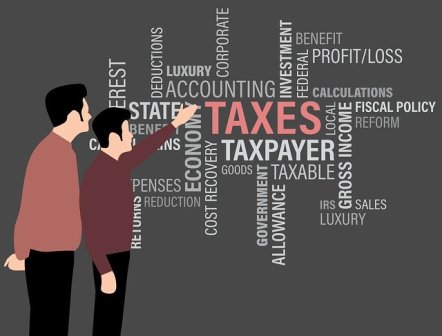What is IGST, UTGST, CGST, and SGST?
October 28, 2021
The Goods and Services Tax was introduced on the 1st of July 2017. Ever since the GST taxation system was enforced, the entire country came under a unified taxation system. However, the newly introduced goods and services tax came with a lot of confusion for companies as the GST system differs from the kinds of products and services that a company offers. Additionally, several other taxes were abolished after the introduction of the goods and services tax. The GST system has four types IGST, UTGST, CGST, and SGST. Each of the four kinds of GST taxation systems has different rates.
But first, let’s look at the taxes that were abolished after introducing the goods and services tax. The GST replaced the Value Added Tax, Octroi, Entertainment Tax, Purchase Tax, Luxury Tax, and Tax on Lottery. Similarly, the GST taxation system replaced the Service Tax and Excise Duty. Some of the taxes that were removed were charged by state governments, and others by the central governments. Since the Ministry of Economics replaced certain taxes from the state and central governments, it came up with different types of GST to make sure that both the central and state governments are compensated.
Types of GST: IGST, UTGST, CGST, and SGST
All four types of goods and services taxes are collected by central and state governments. Additionally, the Union Territories can also collect GST for UT’s development modules. Each of the four GST systems makes sure that the various types of authorities benefit after abolishing some of their local taxes. The following points will clarify what IGST, UTGST, CGST, and SGST are and who gets to collect them.
- IGST (Full form: Integrated Goods and Services Tax)
Since the IGST tax system is for inter-state transactions, Integrated Goods and Services Tax is collected by the central government and later is compensated to state government authorities. The type of goods and services determines the rate of IGST. The IGST is also collected on imports and exports.
Trade transactions that occur between states and union territories also come under the IGST regime. If two or more states are involved in a trade transaction, the IGST is levied, and the tax amount collected goes to the central government. After the IGST has been collected, it is divided between the central government’s respective states or union territories.
- UTGST (Full form: Union Territory Goods and Services Tax)
The UTGST is levied on every product that is sold within the Union territory. In places like Daman and Diu, Nagar Haveli, the Lakswadeep, and the Andaman and Nicobar Islands, the Union Territory Goods and Services Tax is collected. The authority that governs the Union Territory has the responsibility to manage UTGST.
- CGST (Full Form: Central Goods and Services Tax)
The CGST is the tax that is collected on goods and services by the central government. The union government directly benefits from CGST, and the amount collected can be utilised by the central government for development and other financial activities for the country’s benefit.
- SGST (Full form: State Goods and Services Tax)
Like the CGST, the state government has the right to collect revenue in State Goods and Service Tax. The amount collected is directly earned by the state governments. The revenue collected can be used for the development or financial stability of the state governments.
Both the CGST and SGST are included in the sale price of a particular product or service. Also, the rate of taxation that is mentioned in the GST Act by the Ministry of Economics is divided into two parts. For example, if the rate of GST on a particular product is 18%, the customer or consumer will have to pay the full amount of GST. However, the amount of tax collected will be divided into CGST and SGST. Therefore, the state government and the central government will get 9% respectively.


[…] GST or the Goods and Services Tax was introduced in India in 2017. With GST, the central government aims at introducing one nation, one tax module. GST is a single tax levied upon the sale of goods and services across the country. GST is charged right from the manufacturer to the consumer eradicating various indirect taxes. Furthermore, individual states charged local taxes that made ease of doing business across the country difficult. On the other hand, GST made it easier for manufacturers at various locations to sell their products across the country without having to face excess taxes. […]
[…] After submitting the necessary documents, your company will get a GSTN. Hope this helps you in the process of registering for a Goods and Services Tax Number. […]